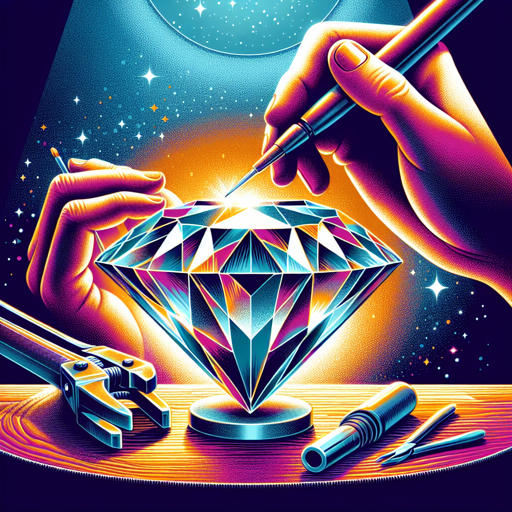Art of Diamond Cutting
Delve into the captivating world of diamond cutting techniques, where precision meets artistry.

Introduction
Diamonds, known as Earth’s hardest substance, symbolize unbreakable bonds of love. But before these beautiful gemstones reach the hands of jewelry designers, they undergo a process called diamond cutting. This article explores the world of diamond cutting techniques where precision marries artistry.
Diamond Cutting: An Art and a Science
Diamond cutting is both an art and a science. The process involves converting a rough diamond into a faceted gem. Diamond cutters must consider a diamond’s natural characteristics to maximize its visual brilliance.
The Basics of Diamond Cutting
Diamond cutting consists of several steps: planning, cleaving or sawing, bruting, polishing, and final inspection.
- Planning - Diamond cutters extensively study the diamond in its rough state to decide the optimal cut.
- Cleaving/Sawing - The diamond is then cleaved or sawed to separate it into smaller, workable segments.
- Bruting - Also known as girdling, this step involves the diamond being rounded.
- Polishing - The facets are polished to the diamond.
- Final Inspection - The diamond is thoroughly inspected, and any remaining defects are corrected.
“Diamonds are only lumps of coal that stuck to their jobs.” - Malcolm Forbes
Different Techniques of Diamond Cutting
Over time, different techniques for cutting diamonds have been developed. These techniques aim to maximize the carat weight, color, and clarity grades of the diamond, enhancing its overall value. Here’s a summary:
| Technique | Description |
|---|---|
| Brilliant Cut | This is the most popular diamond cutting technique. The end product is a round diamond with 57 or 58 facets. |
| Step Cut | This technique creates rectangular facets that resemble a staircase, commonly used in emerald and baguette cut diamonds. |
| Mixed Cut | This is a combination of brilliant and step cut techniques, often used for pear, heart, and oval shaped diamonds. |
| Rose Cut | This technique, popular in the 16th century, forms a flat bottom with a dome-shaped crown, rising to a single apex. |
For more detailed information on diamond cutting, please refer to this source.
Conclusion
Diamond cutting is a meticulous process that blends science and art. It’s the skill and precision of the cutter that bring out a diamond’s true brilliance. As we’ve seen, different cutting techniques can enhance the gem’s inherent qualities, making it a masterpiece in its own right. So, the next time you admire a diamond, remember the artistry and effort it took to transform it from a rough stone into a symbol of enduring beauty.